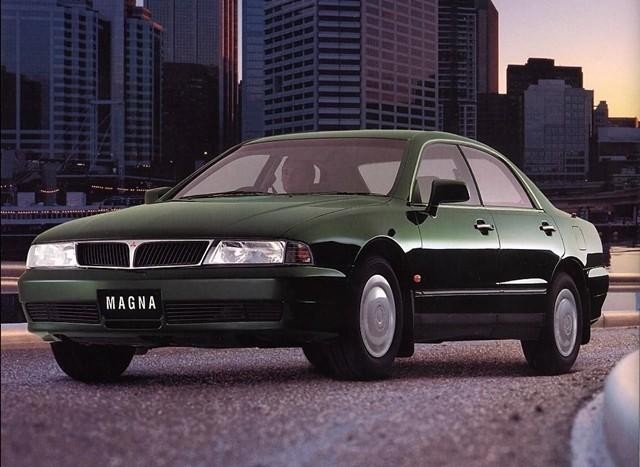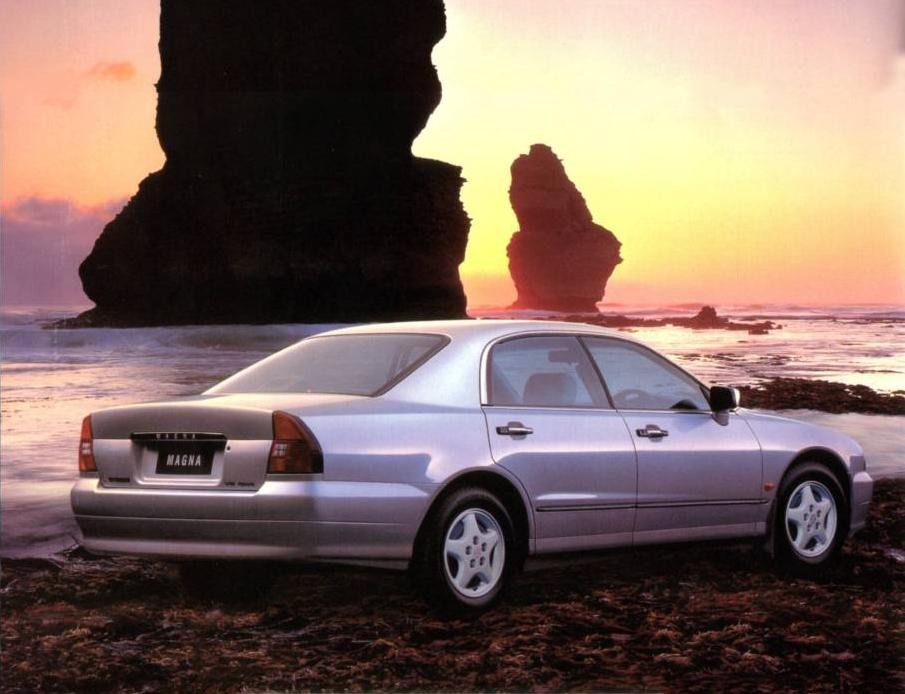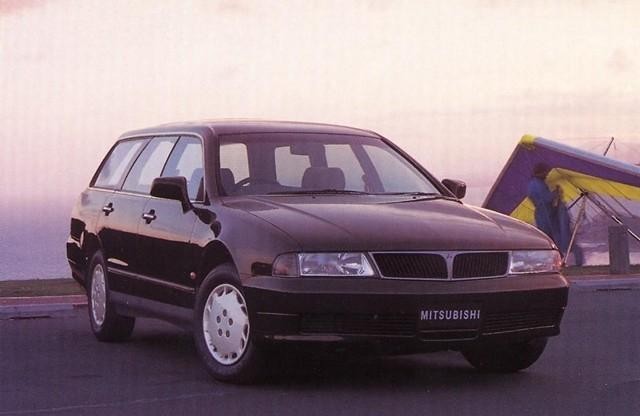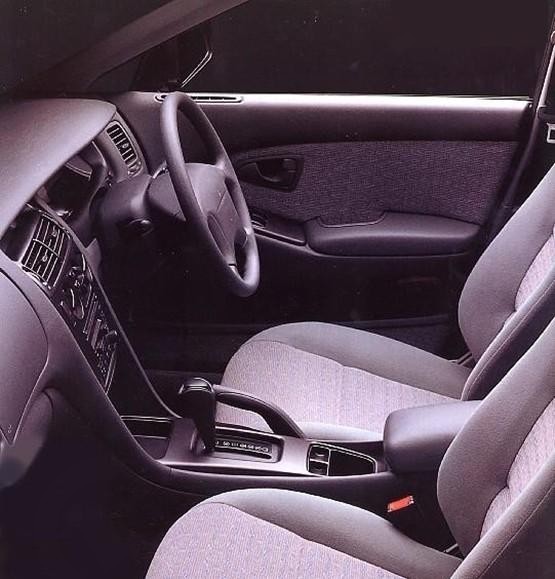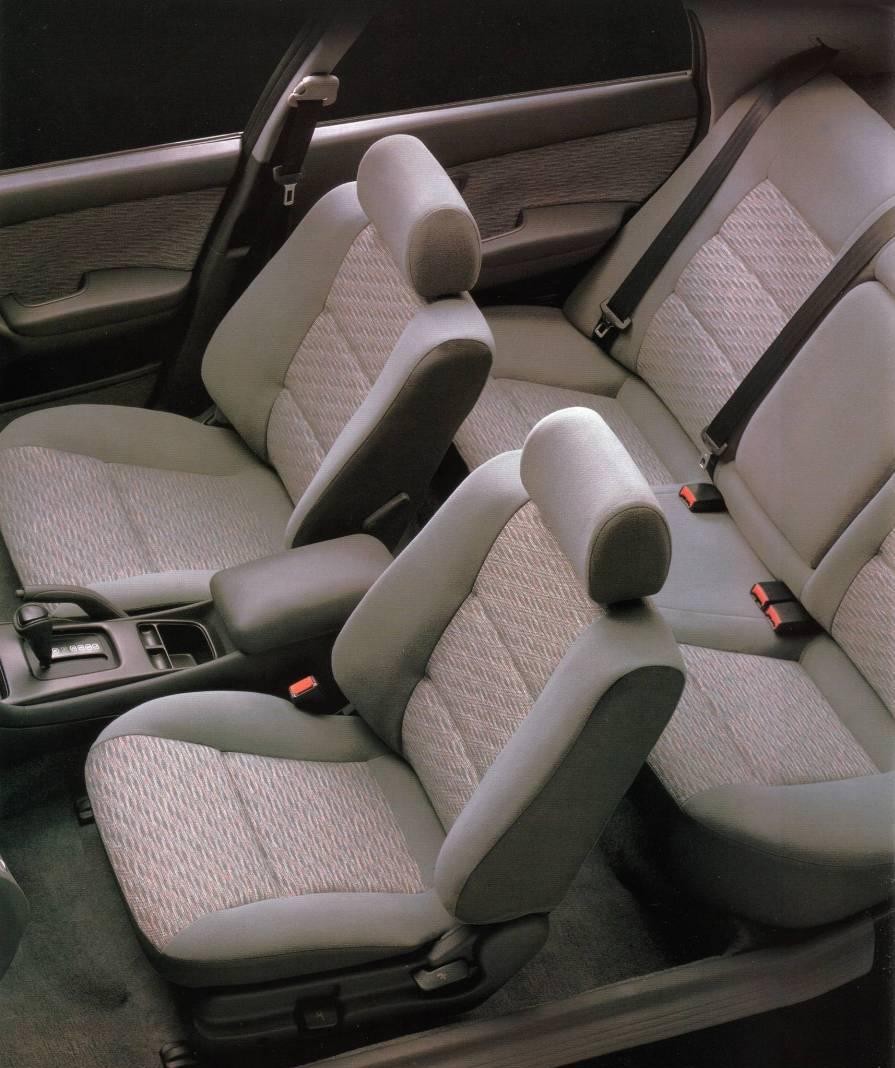
- Refined 3.0-litre V6 petrol engine
- Quiet, well-insulated cabin
- Impressive ride/handling balance
- Spacious interior for front occupants
- Steering lacks feel
- Large turning circle
- For 2.4-litre engine, occasionally clunky downshifts from automatic transmission
- Variable interior fit
Overview
Released in April 1996, the Mitsubishi TE Magna was initially available as a sedan with wagon models following in March 1997. Manufactured at Clovelly Park, South Australia, the TE Magna was available with either 2.4-litre four-cylinder of 3.0-litre V6 petrol engines.
4G64 and 6G72 engines
Of these engines,
- the 2.4-litre 4G64 engine had a cast iron block, single overhead camshaft, four valves per cylinder, compression ratio of 9.5:1; and,
- similarly, the 3.0-litre 6G72 engine had a cast iron block, single overhead camshaft and four valves per cylinder, but its compression ratio was 9.0:1.
Transmission choices consisted of a five-speed manual or four-speed automatic unit, the latter with ‘Smart Logic’ programming which enabled it to adapt to driving conditions and style.
Dimensions and developments
Compared to its TS predecessor, the TE Magna sedan was 45 mm longer (at 4740 mm), 10 mm wider (1785 mm), 5 mm taller (1435 mm) and the same length wheelbase (2722 mm). Relative to the sedan, the TE Magna wagon was 26 mm longer (at 4811 mm) and had a 47 mm higher roofline (1482 mm). Furthermore, the TE Magna bodyshell achieved a 13 per cent increase in torsional strength and the sashless door design contributed to a drag coefficient of 0.28 Cd for the sedan and 0.33 Cd for the wagon.
Suspension
The TE Magna sedan had MacPherson strut front suspension with lower A-arms and an anti-roll bar and independent, multi-link rear suspension with upper and lower control arms. The TE Magna wagon, however, had a tubular rear axle with four trailing arms and a lateral locating rod.
| Body | Engine | Variant | Trans. | Peak power | Peak torque |
|---|---|---|---|---|---|
| Sedan | 2.4-litre petrol I4 | Executive, Altera |
4sp auto, 5sp man. |
105 kW at 5500 rpm | 205 Nm at 3000 rpm |
| 3.0-litre petrol V6 | Executive, Altera, Advance |
4sp auto, 5sp man. |
140 kW at 5500 rpm | 255 Nm at 2500 rpm | |
| Altera LS | 4sp auto | ||||
| Wagon | 2.4-litre petrol I4 | Executive | 4sp auto, 5sp man. |
105 kW at 5500 rpm | 205 Nm at 3000 rpm |
| 3.0-litre petrol V6 | Executive, Altera, Advance |
4sp auto, 5sp man. |
140 kW at 5500 rpm | 255 Nm at 2500 rpm | |
| Altera LS | 4sp auto |
Safety equipment
Within the TE Magna range, the Advance and Altera LS variants were equipped with a driver’s airbag and ABS. A front passenger airbag was available as an option.
ANCAP crash testing
In ANCAP crash testing, a 1999 TF Magna – that was not fitted with airbags – received a ‘marginal’ occupant protection rating; this result was also applied to the TE Magna. In the full frontal and offset crash tests, protection from serious head injury was poor for the driver and acceptable for the front passenger; protection from lower leg injury was also poor.
Features
Standard features for the Magna Executive included a four speaker sound system with radio and cassette player, remote central locking, power mirrors, a height adjustable steering wheel, height adjustable driver’s seat and an immobiliser.
The Magna Advance was further equipped with cruise control, while the Altera added air conditioning, velour seat trim and power windows. Finally, the Magna Altera LS was distinguished by its 15-inch alloy wheels.
Related links
